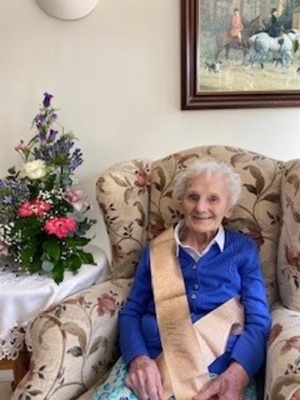Search Results for 'British army'
128 results found.
Let me out I’m a tradesman, jailed pub burglar pleads

A man detained in prison since his arrest for the burglary of an Athenry pub pleaded via video link from prison to Judge James Faughnan that he was a tradesman, and if the judge let him out he would work on building sites to pay back the loss to the pub.
Historic Galway development opportunity
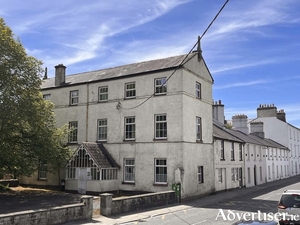
Colleran auctioneers has just been favoured with the sale of one of Galway’s landmark properties, Spires House, Shantalla Road, Galway that comes to the market with full planning permission to redevelop.
Spires House and Fort Eyre, Shantalla
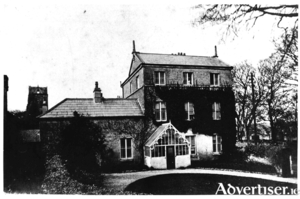
On this day, June 26, one hundred years ago, the Sisters of Jesus and Mary bought Spires House in Shantalla. Three of the sisters in the order had come to UCG the previous year to study for a degree and while they were in Galway, Mother Stanislaus looked for a suitable premises for a house of studies for them and finally purchased this premises. The house dates from the 1840s and got its name from the two unusual spires you can see on the roof. The building was used by the sisters as a hostel for secular students as well as their own nuns and these nuns became known locally as ‘The Spires Nuns’.
Former Galway regiment remembered
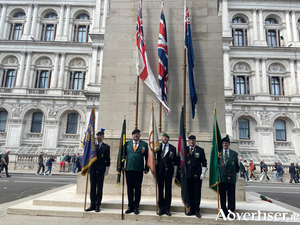
The Standard Bearer was CRA member Perry Futer, who marched to music by the London Irish Rifles’ pipes and drums, and the band of the Irish Guards.
Walter Macken’s trilogy
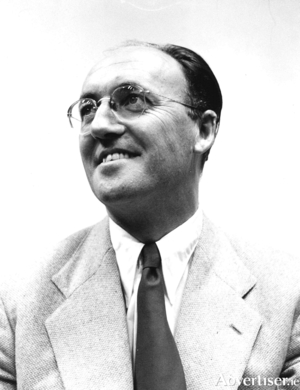
On this Saturday, had he lived, Walter Macken would be 110 years old. He was born on May 3, 1915 in St Joseph’s Avenue. His father was originally from Knock, Spiddal and came to Galway aged 14 and worked as a carpenter during the day. At night, he became an actor who performed numerous roles in the Racquet Court Theatre in Middle Street. He became unemployed in 1915 and, as he had a wife and three children to support, he joined the British Army, the Royal Fusiliers to be precise. He was sent to France and was killed on March 28, 1916 in St Eloi. He is in our first photograph in his army uniform.
Fianna Fáil to mark Easter Rising with Sunday commemorations
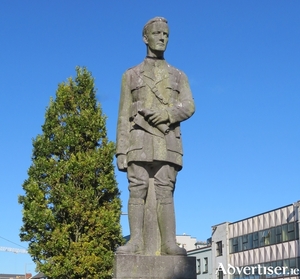
The Fianna Fail 1916 Easter Commemorations will take place on Sunday next, with the annual Mass at St Patrick’s Church, Forster Street at 11am, followed by a parade and wreath laying at the Liam Mellows statue in Eyre Square.
Grealish’s Saddlery
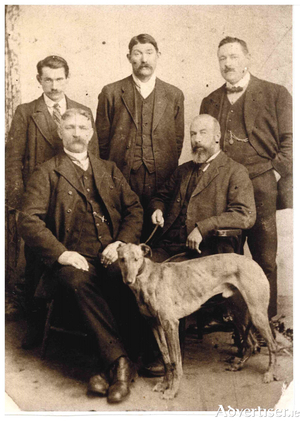
Michael Grealish served his apprenticeship (it cost him 100 guineas) in Garret’s Saddlery in Eyre Square, roughly where the Imperial Hotel is today. When he finished, he decided to set up his own saddlery business at the beginning of the last century at Number 2, Eyre Square. At the time, the horse reigned supreme. There were regular horse fairs in Eyre Square at the time and this obviously helped his start-up.
‘You wouldn’t happen to be William Joyce, would you?’
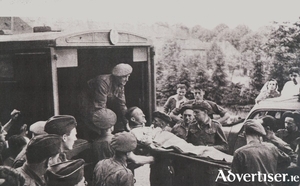
William Joyce was born in Herkimer Street, Brooklyn, New York in 1906 to Gertrude (who was originally from Lancashire) and Michael Joyce, a native of Killour, Co Mayo. Michael had taken American citizenship, which automatically made his family citizens. In 1909, the family returned to Ireland, initially to Mayo, then to Galway.
The changing of the guard
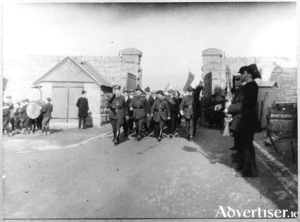
On this day, February 13, 1922, the IRA took over Renmore Barracks from the British. When the Anglo-Irish Treaty was ratified on January 7, 1922, it was only a matter of time before the British Army would leave the Barracks. There was some suggestion initially that the Regional Hospital might transfer to the barracks. On February 2, the last Black and Tans had left Galway by train. The British did not want to surrender the Barracks to the Volunteers, so an arrangement was made where they would leave at a certain time, and the formal handover would take place a few hours later.
